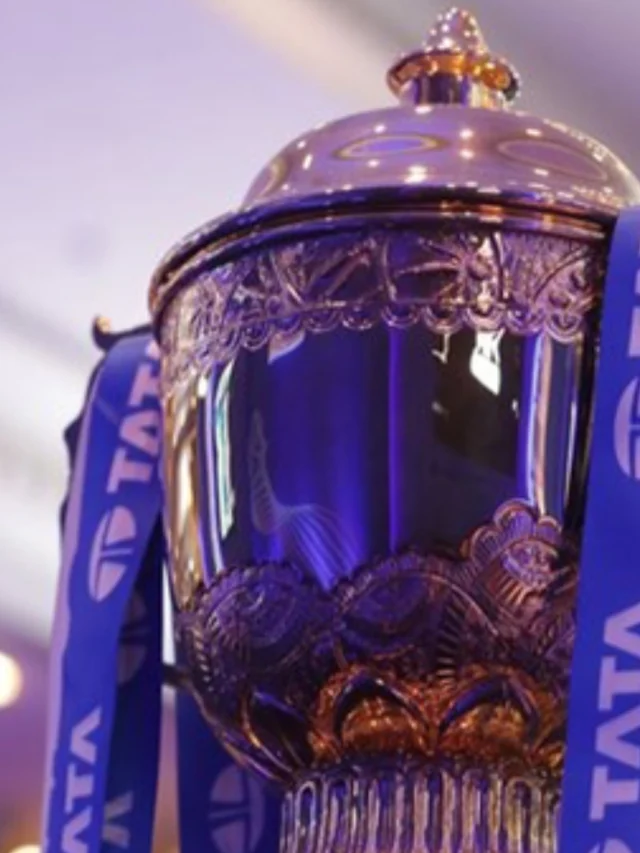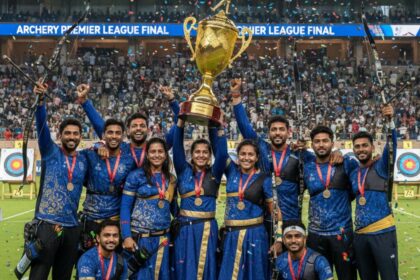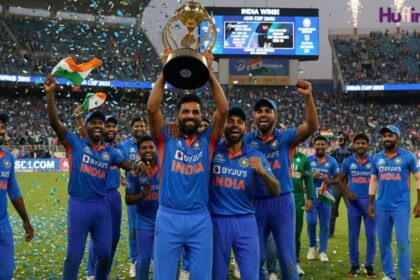The India women cricket team has etched an unforgettable chapter in sporting history by staging a breathtaking comeback against defending champions Australia, chasing down a record-breaking 339 runs in a spectacular display of courage, skill, and determination at the DY Patil Stadium in Navi Mumbai on October 30, 2025.
The stunning five-wicket victory, achieved through a magnificent unbeaten century by Jemimah Rodrigues, propels India into the ICC Women’s ODI World Cup final on Sunday against South Africa, ending Australia’s formidable 15-match World Cup winning streak and delivering a seismic upset that has sent shockwaves through the sporting world.
Jemimah Rodrigues, playing the innings of a lifetime, delivered a composed and masterful unbeaten 127 runs off 134 balls, shattering the pressure of chasing a mammoth total with remarkable poise and brilliance. Her century, achieved in just 115 balls, made her only the second player in World Cup history to score a hundred in a knockout chase, joining an elite club alongside England’s Nat Sciver-Brunt.
The record-breaking nature of this match cannot be overstated. India’s successful chase of 339 represents the highest successful run chase in women’s one-day international cricket history, breaking the previous record and cementing this encounter as a watershed moment in women’s cricket. The combined aggregate of 679 runs across both innings marks the second-highest match aggregate in women’s ODI history, showcasing an extraordinary display of attacking cricket.
Australia had posted a formidable 338 all out in 49.5 overs, built on the back of a sensational debut century from 22-year-old Phoebe Litchfield, who scored 119 off 93 balls to become the youngest player ever to score a century at a World Cup. The Australian innings also featured valuable contributions from Ellyse Perry (77) and Ashleigh Gardner (63), providing a robust platform that seemed insurmountable.
However, India’s women demonstrated extraordinary character and skill in their response. Captain Harmanpreet Kaur played a crucial role with a blazing 89-run knock off 88 balls, forging a crucial 167-run partnership with Rodrigues that proved to be the turning point in India’s chase. This partnership showcased the fearless approach that has come to define Indian women’s cricket in recent years.
The match featured several dramatic moments that could have altered the outcome. Australian captain Alyssa Healy, the wicketkeeper, was responsible for two crucial missed opportunities. She failed to effect a stumping when Harmanpreet was on just 10 runs with 113 still required, and later missed catching Rodrigues when she was on 82. These missed chances proved catastrophic for Australia’s defense, ultimately costing them the match.
Rodrigues’ century was built on unwavering determination and technical excellence. Despite being dropped twice during her innings, she maintained her composure and continued to attack when opportunities presented themselves. Her partnership with Harmanpreet was a masterclass in aggressive yet calculated batting, with both players rotating the strike intelligently while finding the boundary when necessary.
Deepti Sharma played a crucial supporting role in India’s successful chase, taking two wickets (2-73) while contributing with the bat. The Indian bowlers had managed to take three crucial wickets in the final over of Australia’s innings, helping restrict what could have been an even higher total. Sharma’s three-wicket haul in the final over demonstrated India’s fighting spirit and ability to perform under pressure.
The concluding moments of the match were filled with unbridled emotion as India sealed victory. When Amanjot Kaur struck the winning boundary off Sophie Molineux, the entire Indian team erupted in celebration. Captain Harmanpreet Kaur, overcome with emotion, was the first to rush out of the dugout to embrace Rodrigues, and both players broke down in tears of joy—a poignant moment capturing the magnitude of their achievement.
The emotional scenes after the victory reflected the significance of this win for Indian women’s cricket. This is India’s third appearance in a Women’s ODI World Cup final, following previous finals in 2005 and 2017. This latest final appearance, however, feels particularly special given the manner in which it was achieved—through a display of fearless batting that shattered historical records and demolished the myth of invincibility surrounding the defending champions.
Harmanpreet Kaur, having shouldered the responsibility of captaincy through the tournament, exemplified the leadership and composure required to guide her team through a nail-biting chase. Her 89 runs, scored at a quick rate while providing stability to the innings, showcased the evolution of her batting and her ability to adapt to match situations.
The victory against Australia holds particular significance for Indian cricket, as it ends a streak where Australia had dominated World Cup cricket. Australia’s track record of success in World Cups had established them as seemingly invincible, making India’s triumph all the more meaningful and impactful. This win sends a powerful message that Indian women’s cricket has arrived as a genuine force capable of defeating the very best on the biggest stages.
India’s new fearless approach to cricket, as evidenced by this record chase, marks a generational shift in how Indian women’s cricket is played. Rather than being constrained by historical patterns or intimidated by opposition reputations, this team has embraced aggressive cricket while maintaining technical soundness—a combination that has proven devastatingly effective.
Looking ahead to the final against South Africa on Sunday, India has gained tremendous momentum and confidence from this historic victory. The team’s ability to execute under extreme pressure, maintain composure during a record chase, and ultimately deliver when it matters most suggests that India enters the final with a genuine opportunity to claim the country’s first-ever Women’s ODI World Cup title.
The success of this Indian team extends beyond cricket statistics and records. It represents a broader narrative of how Indian women’s sports have evolved, with greater investment, media coverage, and societal support contributing to the development of world-class talent. Jemimah Rodrigues’ century and Harmanpreet Kaur’s leadership will inspire countless young girls across India to take up cricket and pursue excellence in sport.
This semifinal match will be remembered as a defining moment in women’s cricket history—not merely for the records broken or the scale of the victory, but for the way it demonstrated that courage, determination, and belief can overcome even the most daunting of challenges. India’s women have shown the world what fearless cricket looks like, and in doing so, they have written themselves into the annals of sporting immortality.


























